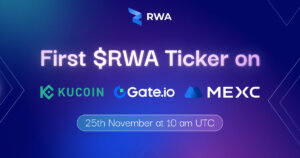Tron (TRX) Achieves 2000 TPS, Surpasses Ethereum
Photo by Andras Kovacs on Unsplash
Tron’s recent mainnet launch marked its official migration from the Ethereum blockchain. Following its partnership with BitTorrent, Tron’s new blockchain has achieved 2000 transactions per second (TPS).
Justin Sun and “The World’s Largest Decentralized Ecosystem”
Tron was able to reach speeds of 2000 TPS following its mainnet launch, according to a company blog post. Migrating completely off the Ethereum network, Tron is now boasting speeds 80 times that of its greatest competitor.
TRON is 80 times faster than Ethereum. With 14 years of experience, @BitTorrent is providing a world-class service to 100 million users in 138 countries. Add the two together and you get the largest and most advanced peer-to-peer network in the world! #TRONBT $TRX pic.twitter.com/EsQd34Vq4u
— Justin Sun (@justinsuntron) July 27, 2018
On July 27, 2018, Tron CEO Justin Sun boasted the potential of Tron’s $140 million acquisition of BitTorrent in a tweet and dubbed the company, “the world’s largest decentralized ecosystem.”
BitTorrent is the owner and operator of popular torrent client µTorrent, which reportedly has over 100 million active users and runs up to 40% of the world’s internet traffic on a daily basis, according to its website.
Earlier this month, Sun announced his campaign to run for one of 27 block producer positions on the Tron network and was elected the day following, garnering 120 million votes by TRON token holders in under 24 hours.
TRON vs. Ethereum
Tron is able to exceed Ethereum’s maximum 25 TPS by using an adjusted delegated Proof-of-Stake (DPOS) consensus mechanism known as TPOS.
27 TRON “super representatives” are elected to make structure and governance decisions on behalf of the greater community. A TRON super representative acts as a key node on the Tron protocol – capable of validating transactions, creating new blocks on the network and competing for block rewards.

On a blockchain-based operating system, a smaller number of nodes means quicker transaction confirmations and higher throughput.
Ethereum’s future Proof-of-Stake (PoS) consensus mechanism requires that more than 13,000 active Ethereum nodes verify each transaction before it’s confirmed – causing low TPS and a susceptibility to congestion.
In light of these scalability issues, Ethereum is pursuing second-layer solutions, such as plasma and sharding.
Sharding is a scaling solution that uses micro-chains – call shards, to process separate types of transactions on the Ethereum blockchain – requiring only a group of nodes to verify relevant transactions rather than the entire network.
Similar to Bitcoin’s Lightning Network, plasma adds a second layer of off-chain branches to the Ethereum main chain in order to process high-volume smart contract protocols more quickly, updating the base layer only when transactions are complete.

Each second-layer system is meant to improve scalability on the platform by running dApps independently from the Ethereum main chain. On July 10, Co-founder Joseph Lubin said that Ethereum was moving onto ‘Phase 2’ of development.
Both competing smart contract platforms have made extravagant claims at the potential speeds of TRON and Ethereum.
In early June, Vitalik Buterin told viewers in an OmiseGO AMA that Ethereum could potentially achieve 1 million TPS once second-layer solutions were fully integrated. Prior to their mainnet launch, TRON CEO Justin Sun stated in a tweet that the network aims to eventually achieve 10,000 TPS – a major selling point for early dApp developers building large-scale projects.



 Farside Investors
Farside Investors 


 CoinGlass
CoinGlass 

























































































